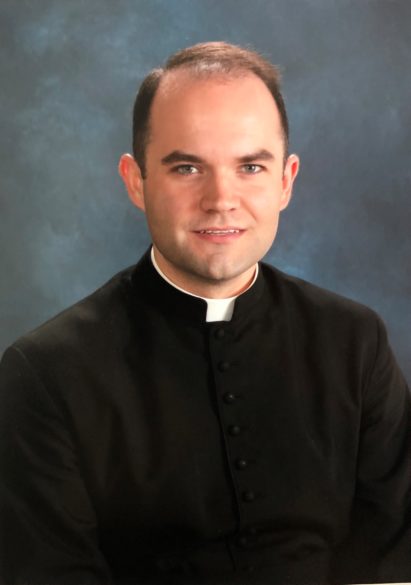
SPIRIT AND TRUTH
By Father Aaron Williams
In my last column, I discussed the vision of the Second Vatican Council in regard to the active participation of the laity in the Sacred Liturgy. I mentioned that the first time this term was used in a papal document was in 1903 when Pope Saint Pius X proposed the idea in the context of speaking about the role of music in the liturgy. I would like to expand that thought now by considering what the Second Vatican Council proposed as the stand of liturgical music.
Speaking on this topic, the Council Fathers said, “The musical tradition of the universal Church is a treasure of inestimable value, greater even than that of any other art. The main reason for this pre-eminence is that, as sacred song united to the words, it forms a necessary or integral part of the solemn liturgy.” This statement needs to be carefully considered. The Council proposes that music is “integral” to the liturgy itself. In other words, it is no mere ornament or decorative element to liturgical act. We Catholics are not called to sing “at” Mass — as if the Mass was some gathering within whose context we burst into song. Rather, we are called to sing “the” Mass.
What does that mean? The post-conciliar document, Musicam Sacram, which remains today the most authoritative Church document on sacred music, gives a pretty firm recommendation in how music is to be incorporated in the liturgy. In fact, it gives three degrees of sacred music in the Mass — numbering them according to importance as to what should one sung. First among this list is the dialogues between the priest and the people. That may seem odd to us. We might imagine the Church desires some sort of hymn be sung before anything else. In fact, in our common experience, we usually associate the priest chanting the dialogues or the prayers as something reserved to really solemn occasions.
The Church, however, sees things a little differently. The dialogues between the priest and the people, the prayers, the preface — these elements constitute the most important parts of the Mass. They are the parts of the Mass where we take our true role as the members of Christ’s Mystical Body. It is fitting, therefore, if these are the moments when we are most participating in the liturgy, that these are the first to be considered when finding the place of music in the liturgy.
In my own practice, I have developed a custom of always chanting the principal dialogues and prayers at the main Sunday Mass when I am the celebrant. I know other priests that do this at all Sunday Masses, and some even on weekdays. By elevating these texts into song, we further unify our voices as one expression of Christ’s body — not only joining in word, but also in tone, and meter, and expression.
The second elements are those parts of the Mass which are unchanging, or what the Church calls the “ordinary” (the Kyrie, Gloria, Creed, Sanctus, and Agnus Dei). Most of these parts of the Mass are normally sung in most parishes, so I don’t think much needs to be said other than that since they are unchanging it is much easier for parishes to memorize settings of the Mass ordinary for singing, thus furthering their ability to truly participate in these acts.
Finally, there is the proper. Most people have no experience of the sung proper. At daily Masses in some parishes, people will experience the antiphons spoken from a missallete. These antiphons are intended to actually be sung, especially in more solemn Masses, and are what the Church calls the “proper” of the Mass. In our ordinary experience, the vast majority of parishes substitute the proper antiphons for hymns (which are rooted in a vastly Lutheran/Anglican/Methodist tradition). While this is certainly permitted by the liturgy, the ideal proposed by the Council Fathers was that the proper of the Mass be truly sung.
I will use the second Sunday of Easter as an example. The Gospel that day was about St. Thomas coming to believe in the Resurrection when Christ says to him, “Bring your hand and feel the place of the nails.” The Church, desiring us to make a connection between the risen flesh of Christ in the Gospel and the real presence of Christ in the Eucharist, encourages us to take these same words upon our lips as we approach the altar. The Communion antiphon that day is, “Bring your hand and feel the place of the nails, and do not be unbelieving but believing, alleluia.”
In most places, this text was probably not even considered and was replaced by a eucharistic hymn, but by doing so we are replacing parts of the Mass which, like the readings themselves, the Church offers for our own spiritual nourishment. Though there isn’t space to go into all the various options for how these propers may be sung, suffice it to say there are a plethora of resources available readily online for free which can enable any parish to begin approaching this goal.
(Father Aaron Williams is the parochial vicar at Greenville St. Joseph Parish and serves as the liaison to seminarians for the Office of Vocations.)
